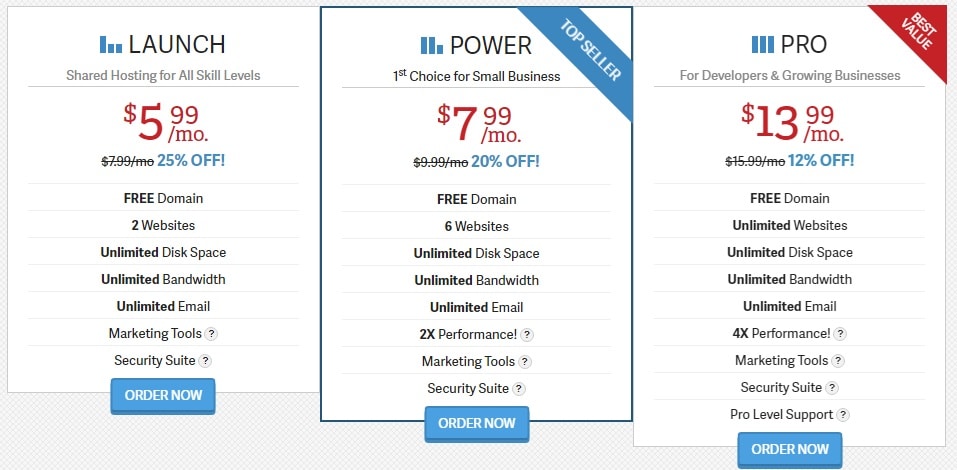Do you want to start a successful blogging in 2019? Blogging is a great way to channel your creative energy. It gives you many options to create outstanding content, and you might get a huge following because you are doing exactly what you love.
Unfortunately, many people give up right away because they are convinced that launching a blog is complicated. However, the process is quite simple. Of course, you’ll need to learn as much as you can about blogging itself.
If you are driven and willing to learn, you will not have a problem creating as well as maintaining a blog. Keep in mind that writing regularly is an absolute must if you want to be noticed and recognized in the community. If you have been wondering how to start a successful blog, you can find all the information you need in the guide below.
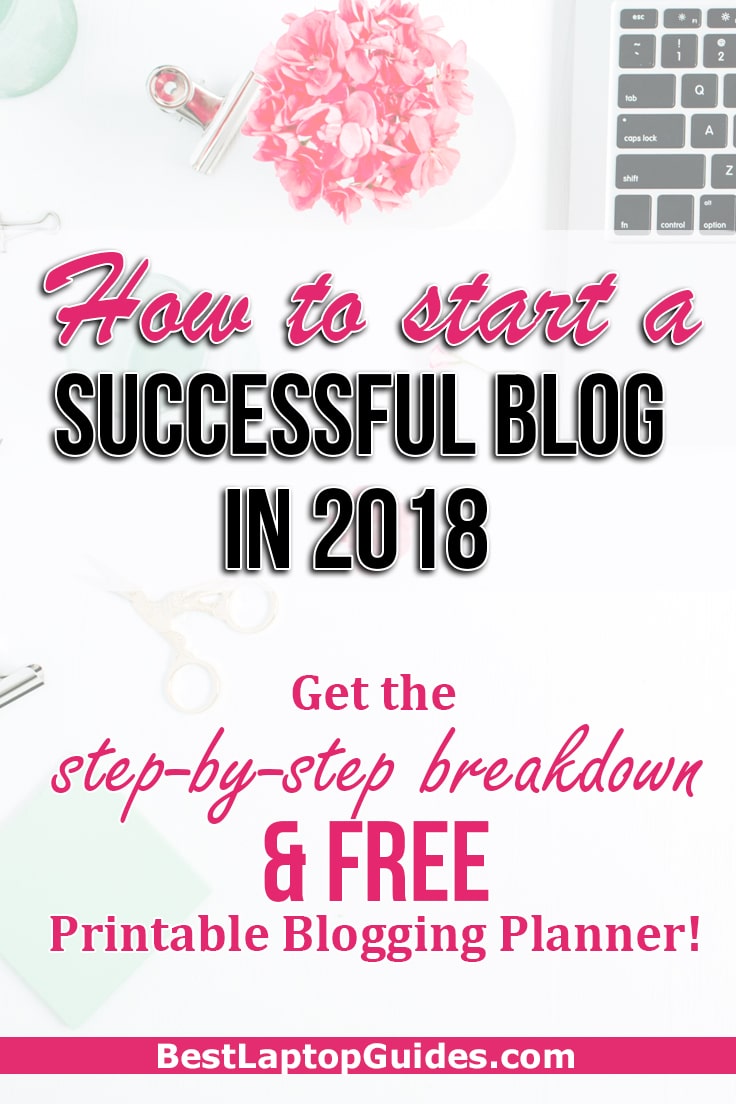
Disclosure: Some of these are affiliate links, and at no additional cost, we may get paid if you buy something or take an action after clicking one of these.
No.1. What is a blog?
The term “blog” is probably very familiar to you. However, let’s get back to the basics and explain the meaning of this word. A blog can be seen as a personal place on the web where you publish various posts. It is a type of online journal or even diary that documents your personal life and experiences. It used to be called a weblog back in the day, but the word was shortened.
You can select any niche you want, but it is best to write about things that mean a lot to you. You can focus on a single subject, such as science, but many bloggers tend to mix things up and write a variety of posts about anything they find interesting. A blog should be updated regularly with fresh content, especially if you want to create a large following of readers interested in your posts.
No.2. Should you start a blog?
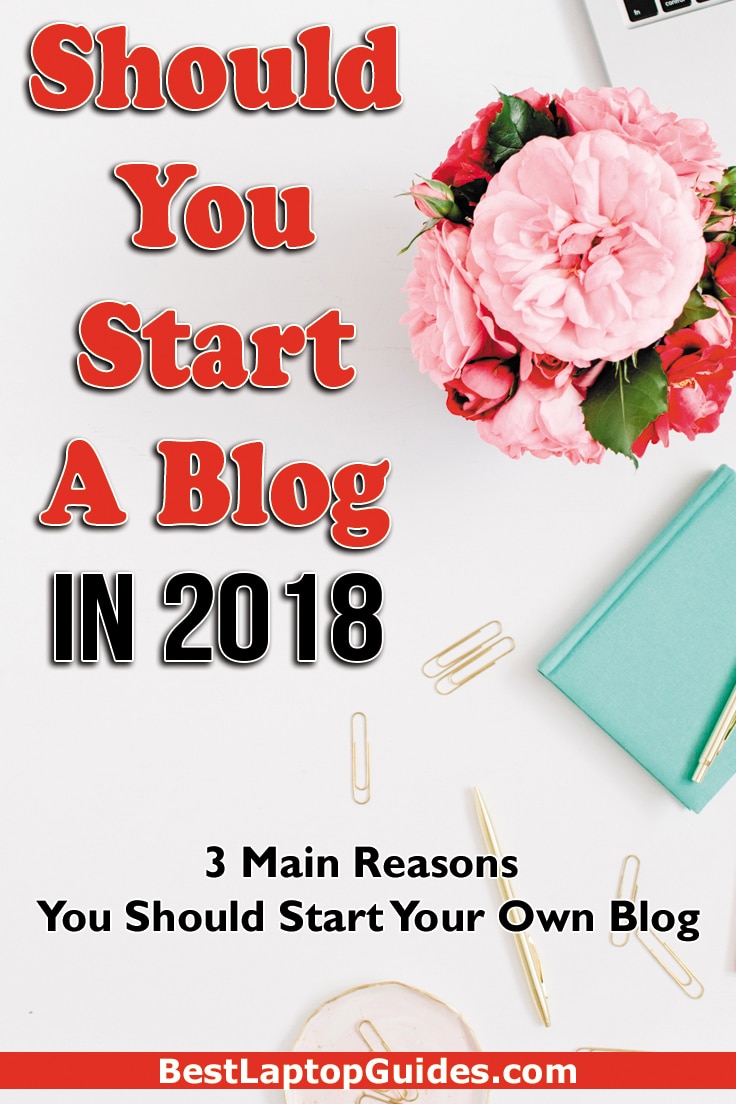
If you are still on the fence about starting your own blog, here are some things to consider.
First, blogging is incredibly easy. If you are scared that you might not be able to create a template or a layout for your blog, don’t worry, because plenty of services are available to simplify this process. All you need to do is focus on creating and publishing your content. If you have something to say, or simply want to share your everyday adventures, keep in mind that blogging is not complicated at all.
Second, you can meet a lot of new people through your blog. The blogging community is huge, and most people are very supportive. They are also willing to help. You can get to know incredible people through your blog, and communicate with your readership either via email or in the comments. Plus, you will inspire many of them by sharing details from your life or posting educational content, or through your style of writing.
Third, posting about your experiences can be a learning process for your readers. Through your blog, you can help them grow, and they will be well-informed about topics they might be interested in.
Finally, if you want to start a blog, keep in mind that you will develop as both a writer and a creative individual. The more you write, the better your style will be.
Pin for Later
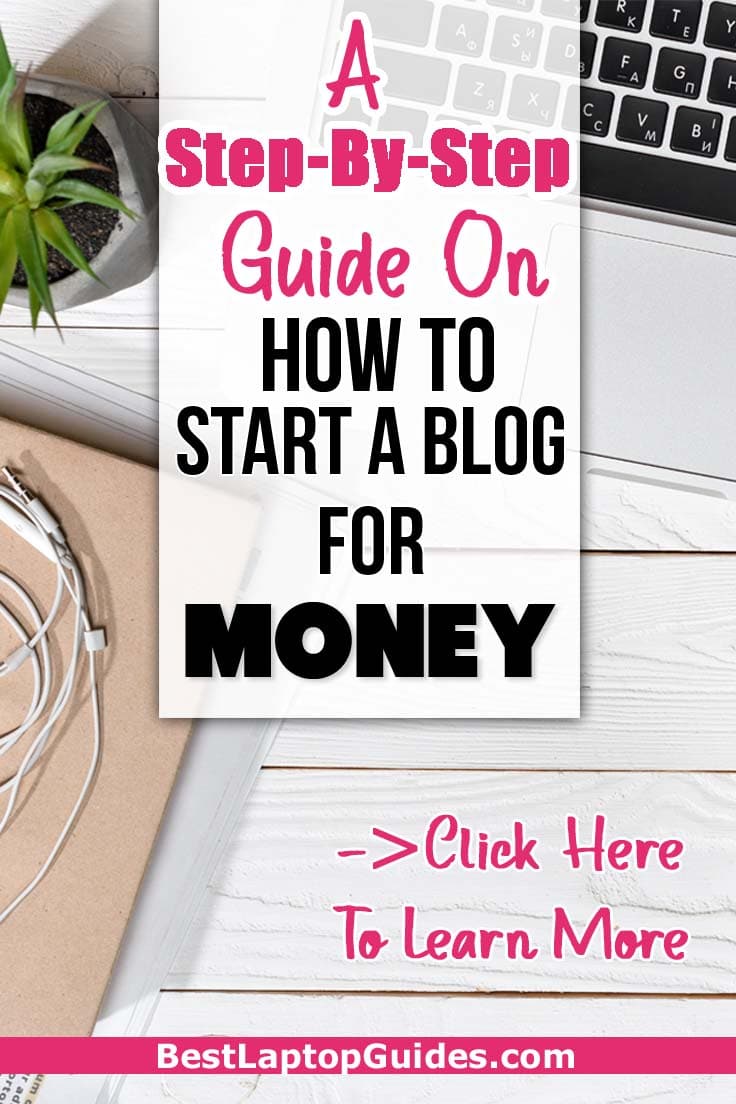

No.3. How to Start a Blog in 7 Steps:
Step 1: How to choose a blogging platform.
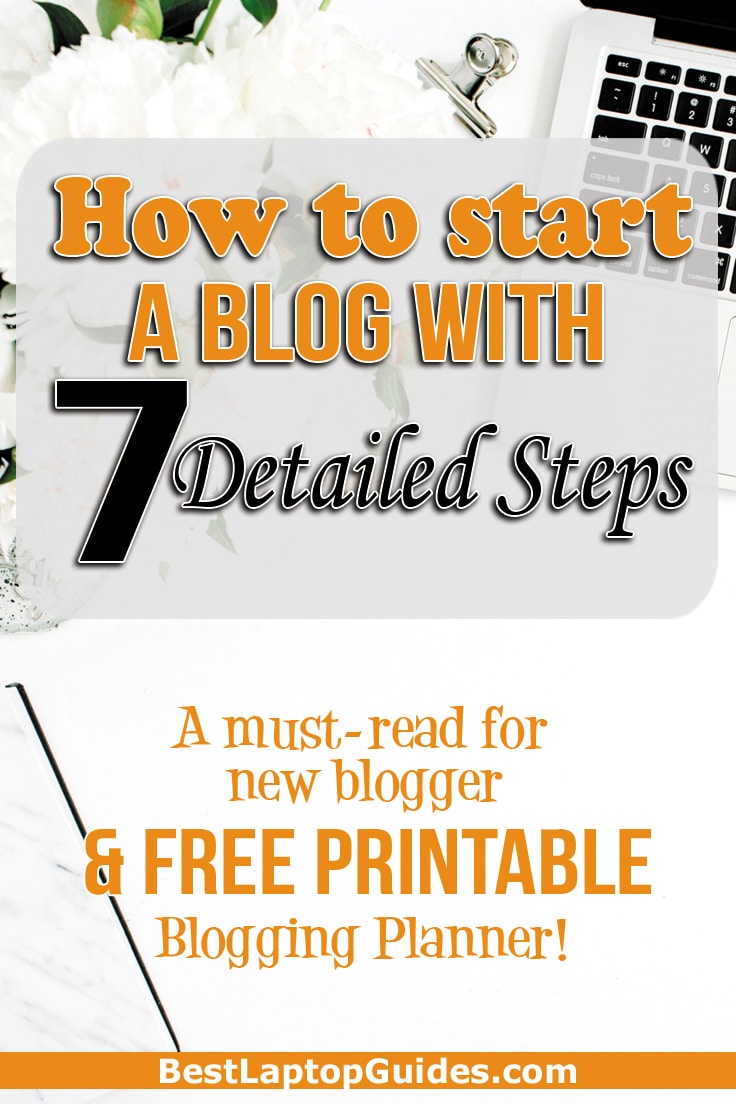
You have decided to create a blog, so the first thing you must do is choose a blogging platform. This might sound difficult, especially if you are new to blogging and unfamiliar with your options. Some bloggers might suggest that you select a self-hosted blogging platform, while others might support free blogging services. What is the difference? And which one is more suitable for you?
Free blogging platform
A free blogging platform allows you to create a blog without paying an initial fee. Therefore, you can set up your entire page and not spend a single dollar. WordPress (WordPress.com) and Blogger are the most popular free blogging platforms; they are known among new users because these sites are easy to navigate. Plus, you will have everything ready in just a couple of minutes. Of course, there are a couple of downsides, such as limited storage space, not having full control of the look of your blog, and a domain that ends with the name of the platform.
Self-hosted blogging platforms
Self-hosted blogging platforms are different because you, as a blog owner, are in charge of everything. You are hosting your page on a server of your choice, so you will have plenty of storage space for your data. Additionally, to promote your blog, you can use SEO without any limitations. In addition, the design is completely up to you, so you can implement add-ons and other means of promotion. However, you must pay a monthly fee if you want to keep your blog online. All of this can be a bit complicated for beginners. If you are new to blogging, the best option is to create a WordPress or Blogger blog and see where it leads.
If you want to be a successful blogger, the best thing you can do is use a self-hosting platform. This means you are serious when it comes to blogging and you will be able to turn your blog into a business. In addition, this might lead to a larger following. Free hosting platforms offer a variety of templates, but with a self-hosting platform you can completely customize your blog’s look. You will be able to design a layout that reflects everything your brand wants to represent. Plus, you can show how unique you are.
Self-hosting platforms such as WordPress are perfect if you want a scalable blog that looks great on any device or browser. You can also add various plugins, such as automatic backup that will save your posts if your blog crashes. Additionally, your followers will have a better experience while reading your blog because the loading time on self-hosting platforms is shorter. Free platforms can be slow, and your posts might not show immediately. A self-hosted blog looks more professional and polished, which will certainly add credibility to your personal brand. Take your time and review all the positive aspects of a self-hosting platform.
Step 2: How to choose your blog name.
Coming up with a catchy and unique name for your blog can sound nearly impossible, but it really isn’t. Certainly, you will have to take some time to think about it and brainstorm a couple of ideas. However, there are ways to make the process easier. For instance, if you already know the niche of your blog, play around with possible names that touch upon that subject. Try to keep it interesting and distinctive because you want visitors to remember you.
Checking out similar blogs is not uncommon, either. You might get inspiration in the process. Of course, don’t steal others’ ideas. If you get stuck, ask your friends or family for help. Explain what you want to do; perhaps one of them will come up with a title. Or you can use your own name if you are completely out of ideas. This is very popular at the moment, and your blog will definitely stand out.
Finally, check out available domain names even if you don’t plan to buy one right away. If you have more than one idea, this can help you narrow down the list, so you can quickly select the best one.
Step 3: How to find a hosting provider.
A hosting provider can make your blog appear more professional and refined. Such providers offer web hosting as well as custom domain names. If you decide to self-host your successful blog, find a provider that has everything you need to run your blog properly, stable and fast hosting.
You can also host your WordPress blog on a different hosting provider, removing the WordPress domain name. Plus, you can add more content to the layout. Of course, there is a fee, and it is usually paid on a monthly or yearly basis. Hosting providers offer great options because you will be able to upload all your files in one place, and your bandwidth will be unlimited.
If you want to start a blog about traveling, fashion, etc., you might need more hosting space because you will likely be sharing plenty of videos and images. InMotion Hosting is one of the most popular hosting providers; it even has a partnership with WordPress, which makes the process easier.
If you already have a WordPress page, moving it to InMotion Hosting will not be hard at all. Plus, you will be able to select a domain name from its directory. Hosting providers can improve your blog, so dive into your research and see which one fits your needs.
If you are still thinking about which hosting provider to choose, I personally recommend InMotion Hosting because I’ve been a user for years. There are many reasons why I host my blog there.
For instance, InMotion Hosting is incredibly easy to use, and you can set up everything quickly. This is great for beginners because the site will be with you every step of the way. Plus, you can quickly install WordPress on InMotion Hosting even though you might not be familiar with coding. If anything goes wrong, you can always contact InMotion Hostings 24-hour support.
Next, select your plan. With new bloggers, you can choose Launch plan with $5.99 per month.
Step 4: How to register a domain name and choose a domain name for free.
Domain names are certainly not cheap, especially if you are just starting out. As a matter of fact, domains can cost up to $14.99 annually. Custom domains are not a necessity, and you can have a blog without one. However, if you want to start a blog and you are determined to succeed, getting your own domain is a must.
A couple of hosting providers, including InMotion Hosting, offer free domain names to users. This simplifies the process because you can set up your blog and get a domain name in a single place. All you need to do is sign up on the InMotion Hosting webpage; there, you will be able to select your domain name.
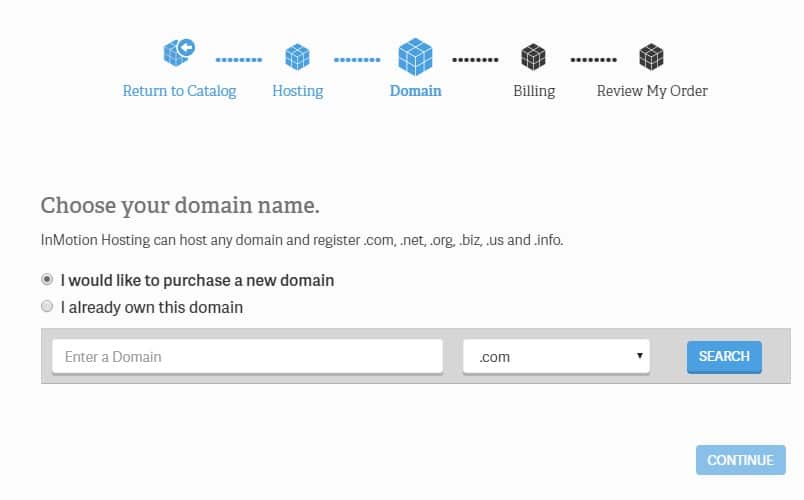
If you did your search and already know that the domain name you want is available, just type it in, and your blog will be registered. By doing so, you will immediately make your blog more professional because it has its own custom domain. Plus, your potential audience will easily find it.
Step 5: How to install WordPress.
WordPress offers its own software to users who register for the program’s services. As we previously mentioned, you can either choose a free WordPress blog or use self-hosting. You don’t have to spend any money on the first option, while the latter requires a fee.
Now, you are free to move on to the next step. Log in with your InMotion Hosting information and install the WordPress software.
You will be able to select one of the free WordPress themes, but you can also skip this part; stick to the basics and customize it later. Click on the Start Building button, and the WordPress dashboard will appear. You will notice a column on the left; this will be your most frequented place on this journey. From here, you can create posts or content, or simply monitor your website’s analytics.
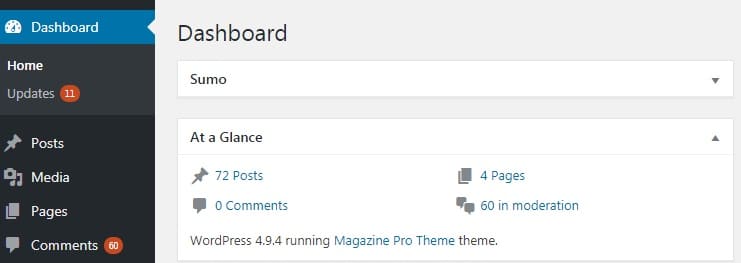
Keep in mind that if you want to start working on your blog right away, the domain will not be ready. It takes a few hours to a day for the registration process to be complete, so keep an eye on your inbox. You will have to activate the domain by clicking on a link in an email. In the meantime, your blog will be on a temporary domain, so you can still share it with anyone who is interested.
Step 6: How to change your theme.
The blog theme is the first thing your visitors see when they open the webpage. Therefore, it must look great. WordPress offers a variety of free themes, but they are usually not regularly updated, which means you might encounter some irregularities and errors. Of course, there are paid themes that are high quality, and they offer more options. Free themes are excellent when you are on a tight budget, but paid themes come with plenty of perks.
Changing a theme is easy. Go to your WordPress dashboard and find the option Appearance on the left.
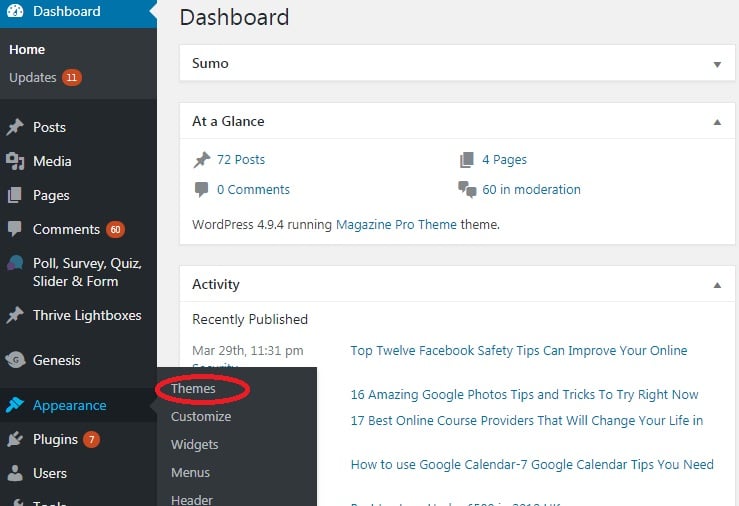
Then go to Themes. You can browse the free themes and see which one might fit your blog. Also, if you have purchased a theme, save the zip file to your computer and click Add New on the WordPress dashboard. Click on Choose File and upload your theme. It is important to not unzip the contents of your theme. You must activate it and then preview the theme on your blog to see how it looks live. If you want to add something, go to Appearance and then Customize. There you can perfect the look of the theme.
Step 7: How to write your first blog post.
Creating your first blog post might seem incredibly easy, but you will have to learn a couple of things about it, especially if this is your first time using WordPress. Open the WordPress dashboard and click on the New button at the top of the page. You can complete the same action by clicking on Posts on the left sidebar and selecting Add New. You will be redirected to the Post Editor Screen. This is where you will write your first blog post.
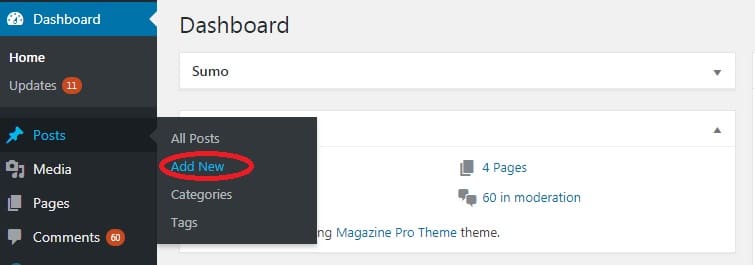
As you can see, you can write the title of the post, as well as the body. However, the Post Editor Screen has a couple of useful additions. You can upload the Featured image that will be displayed at the top of your post. Naturally, you will be able to add more photos and arrange them in the post as well.
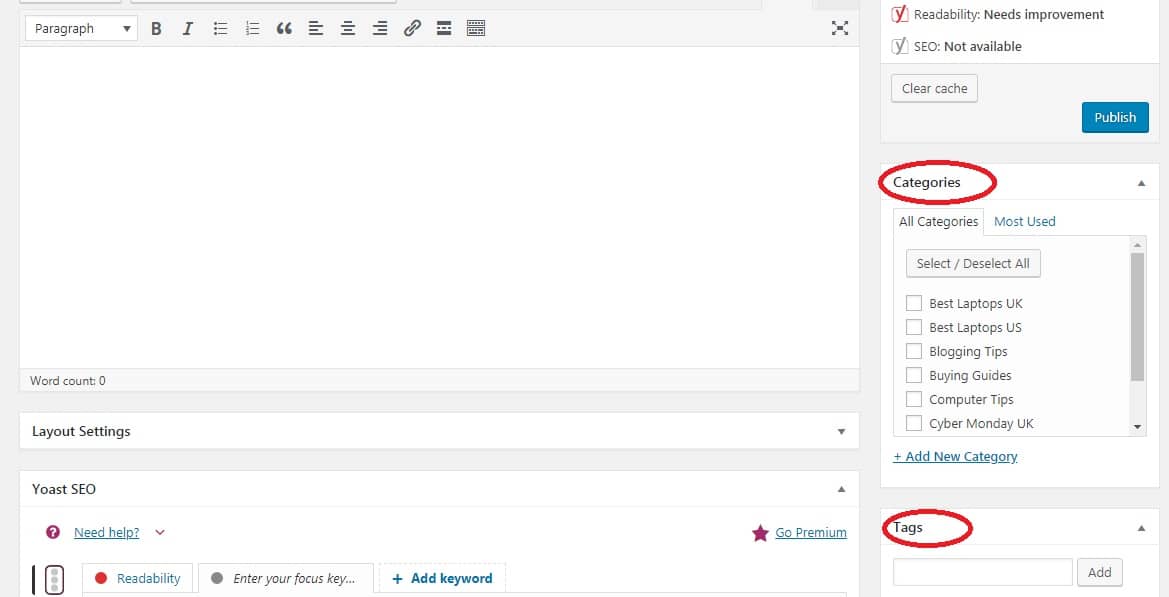
Don’t forget to make use of the Categories and Tags because they will help your readers get around your blog. This feature shouldn’t be ignored because it will keep your blog tidy and well-organized. Good writing is a must, so make sure the title is intriguing and interesting. Your post shouldn’t have any grammar mistakes, so always check your spelling.
You May Like:
How to Write an Awesome Blog Post That Your Readers Will Love
Ultimate Guide To Find Best Affordable Laptops for Writers and Bloggers in 2019
No.4. Resource for WordPress
Once you set up WordPress, start exploring the options. WordPress is a powerful platform that can help your blog become more visible. This is where add-ons and plugins come into play. They can help you with SEO and your page’s general performance. If your goal is to create a successful blog, don’t dismiss these helpful tools that can introduce your work to a wider audience.
Jetpack
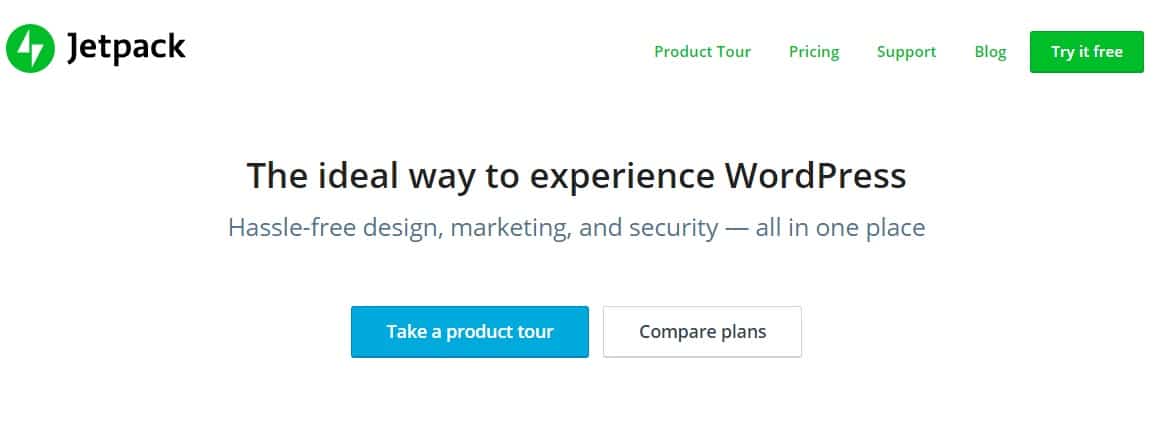
One of the most popular plugins is Jetpack. It is a must-have when it comes to plugins because it provides you with everything you need to market your webpage properly. You will get your complete stats and analysis so you can improve your marketing strategy.
Jetpack also has ad programs that will place appropriate advertisements on your blog. Of course, you can use it to share your posts on different social media sites as soon as you publish a post on your blog. Most importantly, Jetpack will keep your blog safe. The data will be backed up twice a day, which means you will not lose your posts if something happens to the blog.
Yoast SEO
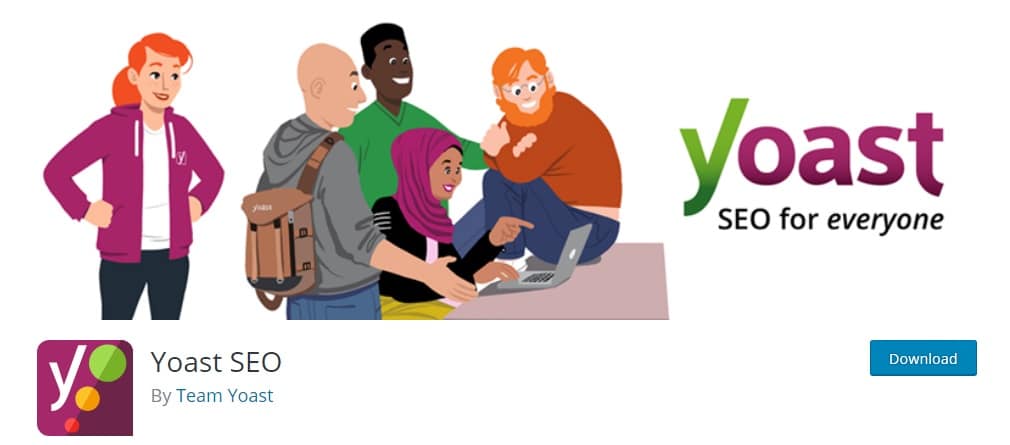
Yoast SEO is used for Search Engine Optimization; it can help you get a better ranking in different search engines. It automatically selects five keywords that are commonly used and will rank your page.
Therefore, you don’t have to do manual research to determine which keywords will be most useful for you and your blog. Yoast SEO (Premium) has perfected the internal linking, so you won’t have to place each link separately on your own. This can improve the overall structure of the site and help search engines scan your blog properly. You can also preview the look of your page on search engines so you can see exactly what your visitors will see.
WP Rocket
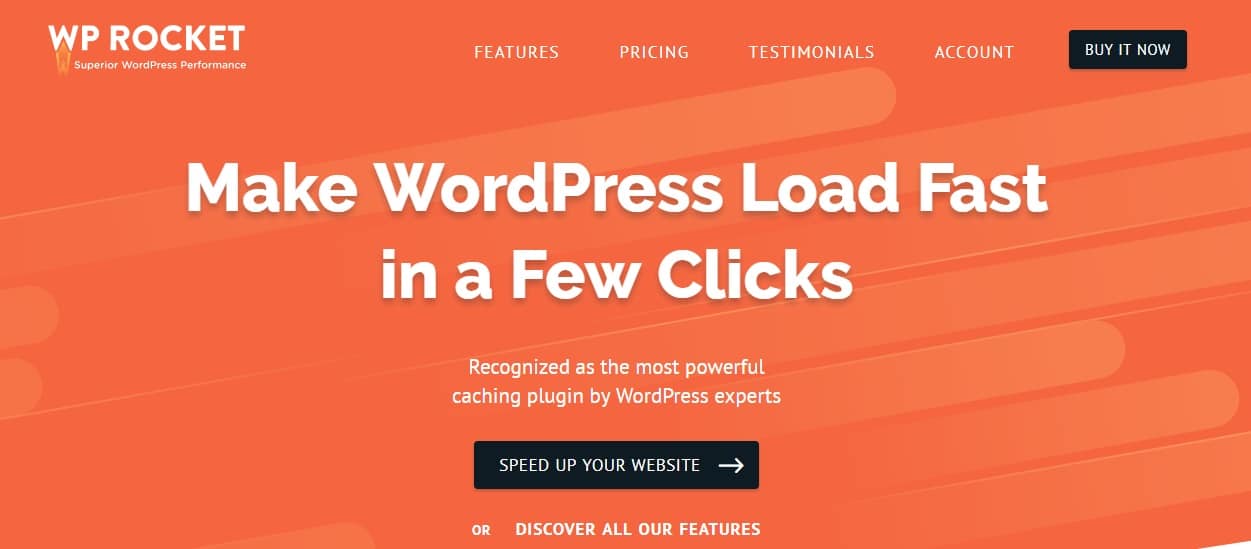
Finally, there is WP Rocket. This is a caching plugin that will make your blog content load faster, reducing the wait time. This feature will improve Search Engine Optimization so the indexing will not take too long.
Additionally, WP Rocket will give your visitors a great experience on your website because the images will not load all at once. Instead, they will appear as visitors scroll down the page, shortening the load time. The performance of your site will be impeccable, guaranteeing that readers come back time and time again.
No.5.Best Ways To Build Traffic To Your Blog
Probably the most important component of how to start a successful blog is getting traffic to your page. You must focus on bringing in an audience who will be interested in the content you publish. This will make your blog better rated, causing it to stand out on search engines.
Social Media: Facebook, Twitter, Instagram
Of course, social media is one way to increase instant traffic to your blog. I cannot stress enough how important it is to be present on the most popular websites, such as Facebook, Instagram, and Twitter. Always place a link to your blog in a visible place, preferably in the About Me section. Your profile will look professional and visitors who are interested in learning more can click on the link. Plus, they still count as a backlink, so your blog’s rating will go up. Inform your followers about new posts on your blog and share the links with them. This can motivate them to not only click but share as well.
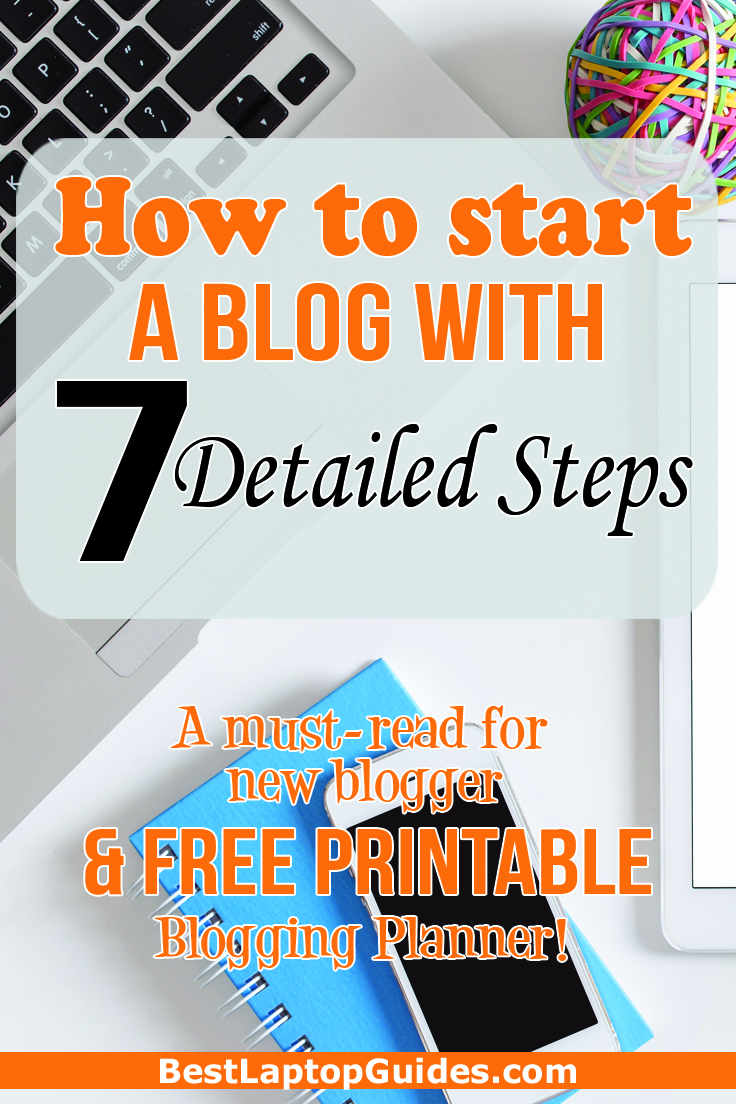
Don’t forget Search Engine Optimization on social media! Keywords should be your priority, so use them to fill out the About Me section.
Next, focus on getting traffic from Google. This is the most popular search engine among users of all ages, so you should seek to improve your Search Engine Optimization. Keywords are crucial because Google will scan your blog for them. Make sure you include the main keywords in the description so that Google will know what your page is about.
Keyword research is required, especially when you know your intended target audience. Images are also important, and are a perfect way to include even more keywords on your blog. Make quality content that your readers will share, because that counts as well.
YouTube
You can also build traffic from YouTube. The site has millions of users, so it would be foolish to overlook it. Your YouTube videos can direct viewers to your website or interest them in signing up for your mailing list. On each of your videos, set up an ending card that prompts viewers to visit your blog. You can intrigue them by teasing a new blog post or saying that they will get more information on your page. YouTube is great for creating a buzz about your blog, so make sure you create a channel there as well.
Pinterest is a unique website because it combines a search engine with social media sites. Though some bloggers might overlook it, Pinterest can significantly increase traffic to your website.
Pinterest is used for sharing eye-catching images that prompt people to click on links accompanying the photos. You can easily share your posts and sort them into different categories or boards. Because Pinterest is a type of search engine, keywords are quite important. To increase traffic to your blog, don’t forget to add at least a couple of them to your pins.
Discover more:
How I Get 100k Monthly Pinterest Views With 8 Important Steps
No.5.Rewarding Ways to Monetize Your Blog
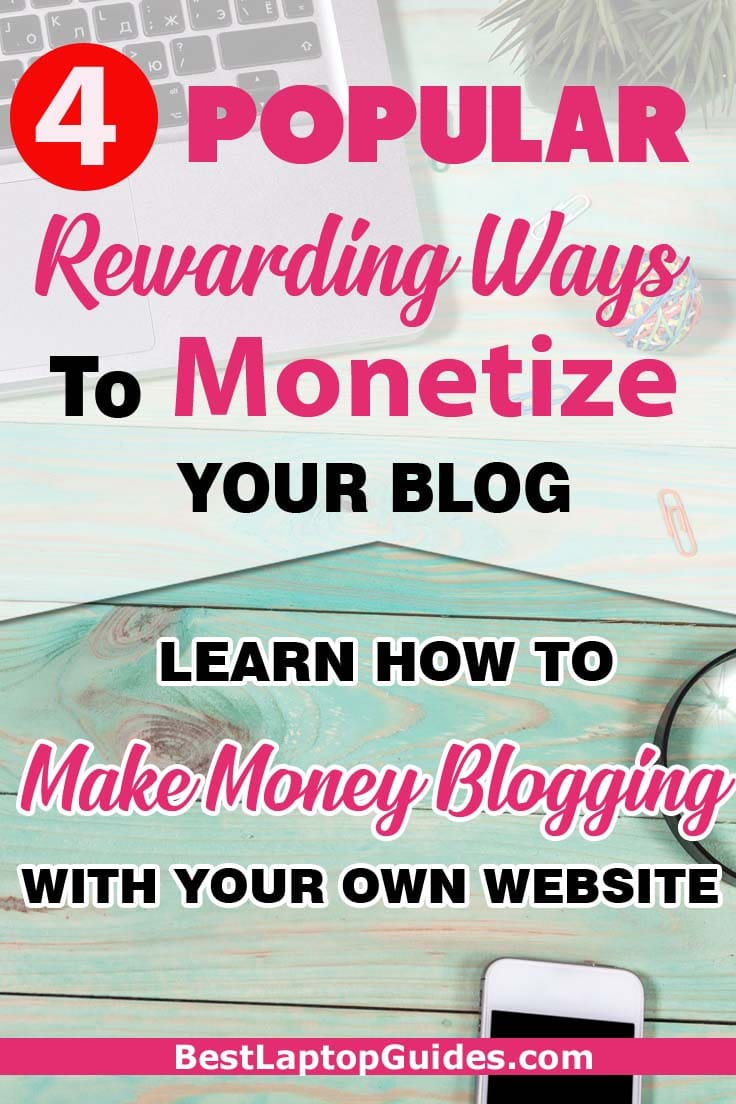
Has your blog started to get good readership or views? Drawing an increased amount of traffic to your blog is a clear indication that the time is right to make some money.
Following are 4 lucrative ways to monetize your blog:
1. Ad networks
Cost per Click (CPC) ads are those for which the advertising agent pays you some money each time your blog viewer/reader clicks on the ad(s). Different advertisers pay different amounts.
- Google AdSense and Media.net are examples of CPC ads.
- The keyword competition for ads is a major factor determining the amount that CPC ads pay.
- Your earnings through CPC ads are likely to fluctuate a lot.
- Those with a large number of readers who click their ads must opt for CPC ads.
- The CPC ads displayed on your blog page are related to your interests.
In terms of the 3rd point, suppose you have a blog page for fitness exercises and dieting. When a visitor or reader sees a diet book ad or a fitness clothing/shoe ad on your site’s sidebar, he/she is likely to click on it, as the ad is related to your blog’s topic. Such CPC ads have strong chances of being clicked by viewers.
Cost per Thousand (CPM) ads are those for which the advertiser pays you a specific amount to display an advertisement on your blog page. To earn money, CPM impressions do not require viewers to click on the ads. This makes them a great substitute for CPC ads!
- PropellerAds is a well-liked CPM network through which the user has the freedom to decide their CPM price. Payments are made primarily through PayPal, Payoneer, Skrill, WIRE, Webmoney Z, ePayments over a span of 30 days.
2. Affiliate products
To know what Affiliate products are, you must have a grasp of affiliate marketing.
You, as a blogger, are engaging in affiliate marketing when you link certain products/services to your blog page. These products/services are known as affiliate products/services, as they are provided by a different company’s affiliate program.
So, how do you earn through affiliate products?
Each time your blog reader clicks on a product/service link on your blog page and buys the product, you will earn money. The blogger is basically paid a certain amount of the product’s cost.
When should you start affiliate marketing?
Affiliate marketing is an ideal way to monetize your blog right when you are starting. This is because, at the onset, bloggers do not typically have their own personal service/product to sell.
What are 3 key things to keep in mind about affiliate products?
- Promote only those products that are in sync with your blog niche.
- For instance: If your blog covers make-up tips and video tutorials, you can promote current and upcoming make-up products. Your make-up hacks will appeal to your audience. Thus, they will be inclined to click and purchase the make-up products. As the affiliate products sell, you start earning a passive income. On the other hand, if your blog niche is non-vegetarian recipes and your affiliate products are make-up products, this is completely out of harmony. Your page viewers are a different audience and are less likely to click/purchase your affiliate products.
- Promote products that you have purchased and used. Be honest with your recommendation. The affiliate products link on your blog page will take your blog readers/viewers directly to the product. If the product/service turns out to be bad, it might cost you readers. Therefore, do not take chances; promote products you have personally bought and used.
- To prevent your blog readers from being misguided or having a negative impression, it is best to include a “disclaimer” on your blog site.
3. Your own products or services
It’s time to make money with your expert skills! Do you enjoy writing recipes? Do you own your grandma’s personal recipe diary with authentic cuisine? Why not create an e-book with all the unique recipes and sell it right on your blog? You can add some affiliate products, like cooking utensils, cooking gadgets, etc. to connect with a broad audience. This is a fabulous way to earn a good income. It’s profitable and therefore many bloggers do it.
Follow these 7 tips to monetize your blog with your own product or service:
- Idea building
The first tip is to concentrate and come up with an idea for a product that will work on your blog. Obviously, you might have heard or read that a unique idea always works! That is true, but having a 100% exclusive idea is tough. Secondly, you can test your ideas by checking the turnovers of similar product-selling blogs. Give your product/service some exclusive effects to stand out and attract your target audience.
- Idea development
The idea development stage is crucial and requires rigorous effort. A good product development strategy is a must, as it promotes both your brand and your services. Rushing through it will only lead to failure.
- Audience connection
If you can’t relate to the audience, a product can fail despite having an amazing marketing strategy, superb presentation and excellent packaging. Because there are many sellers and many similar products, your audience has the choice to buy from anyone. They will buy from you only when you are able to show them how the product/service worked for you or how it solved your issues. Real-life experiences always have a positive impact in terms of driving the reader to buy the product.
- Brand building
There are 4 main elements of building a brand. Spend money and time on it. The images/objects linked to your brand play a vital role and, hence, should be developed carefully. Advertising will give the brand exposure. Take strict measures to secure your brand.
- Quality marketing
Marketing is no joke. It is a powerful means of reaching your audience. To succeed, know your true audience and market accordingly.
- Smart networking
To thrive in your business, you must know all those who influence your particular area. When networking, consider all the groups associated with you, including yourself.
- Partnerships
Joining forces with those who have essential skills and resources can definitely benefit your product/service. When working in a partnership, ensure that the joint venture is profitable for both groups. Always keep in touch with your partner to discuss and smooth out issues.
4. Sponsored posts, social media
Sponsored posts are a convenient and effective way to monetize your blog. To get sponsored posts or social media opportunities, join networks such as Clever Girls Collective, Linquia, Izea, etc. A huge number of networks focus entirely on connecting brands with bloggers. Finding these opportunities on your own can be tough.
Two types of sponsored posts
- In one type of sponsored post, the blogger posts the client’s website link in a “natural” place on the blog.
- In the other type of sponsored post, the blogger promotes the client’s business or reviews certain items.
Reasons why bloggers opt for sponsored posts
Many people use sponsored posts to make money through blogs for the following reasons:
- Businesses are always seeking to purchase sponsored posts on blogs.
- This is not a demanding endeavor. Not much time or effort is necessary to sponsor posts in a blog. Brands that sponsor posts on blogs are typically satisfied with a link and a mention of the brand in the blog.
- Although not much effort is necessary, companies pay handsomely.
All the above stated 4 ways of making money through a blog are highly rewarding. You can choose one or more ways to monetize your blog. Follow all the important steps and make sure you have a good readership. Once you achieve that, nobody can stop you from generating a good income through your blog.
No.6.Conclusion
Blogging is a great way to share your thoughts with the world and connect with interesting bloggers around the globe.
People might be a bit confused because the process of starting a blog can be intimidating. However, once you get the ball rolling, you can master the basics in just a couple of days, then move on from there.
Laying the groundwork, such as by choosing the hosting and coming up with the name of the blog, might be the most difficult part of the process. Once you get these tasks out of the way, you can be your creative self and write engaging posts. This will definitely bring in an audience, and interest them in what you have to say.
Last but not least, following are some free tools, such as a FREE Printable Blogging Planner and Planning Blogging for Successful Bloggers. This is my gifts for your blogging journey.
You May Interest:
Blog Post To-Do List: 9 Things You Need to Do After You Publish a Blog Post
FREE Printable Blogging Planner
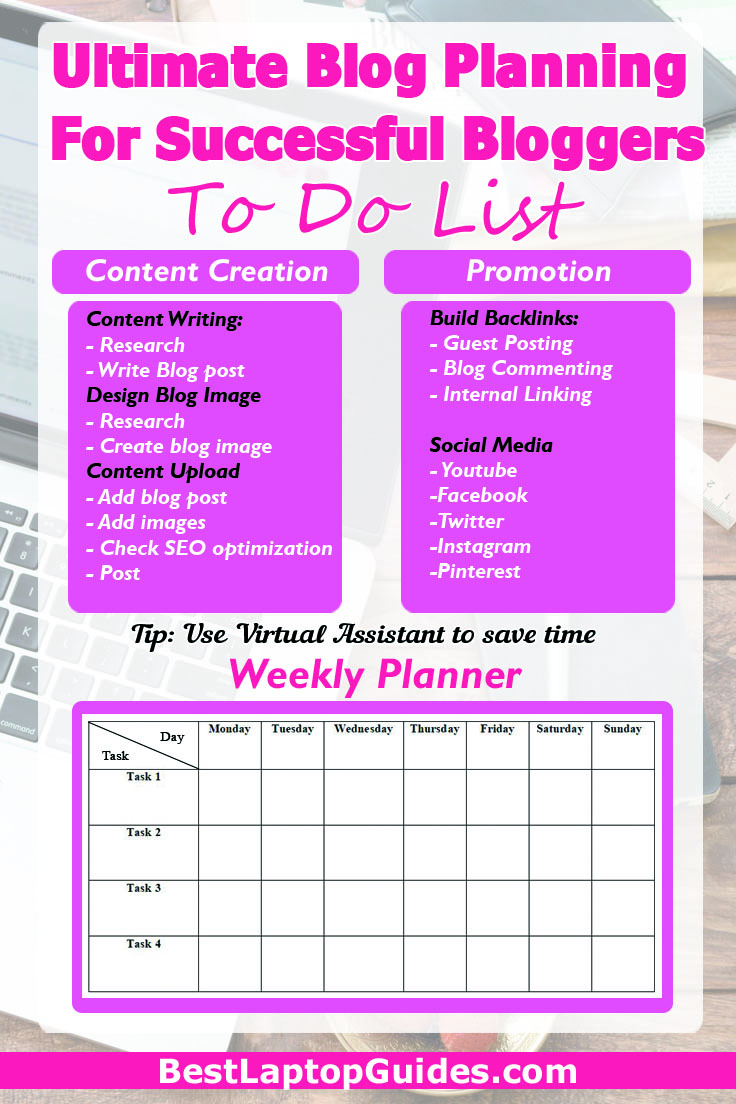
FREE Weekly Planner (Summary)
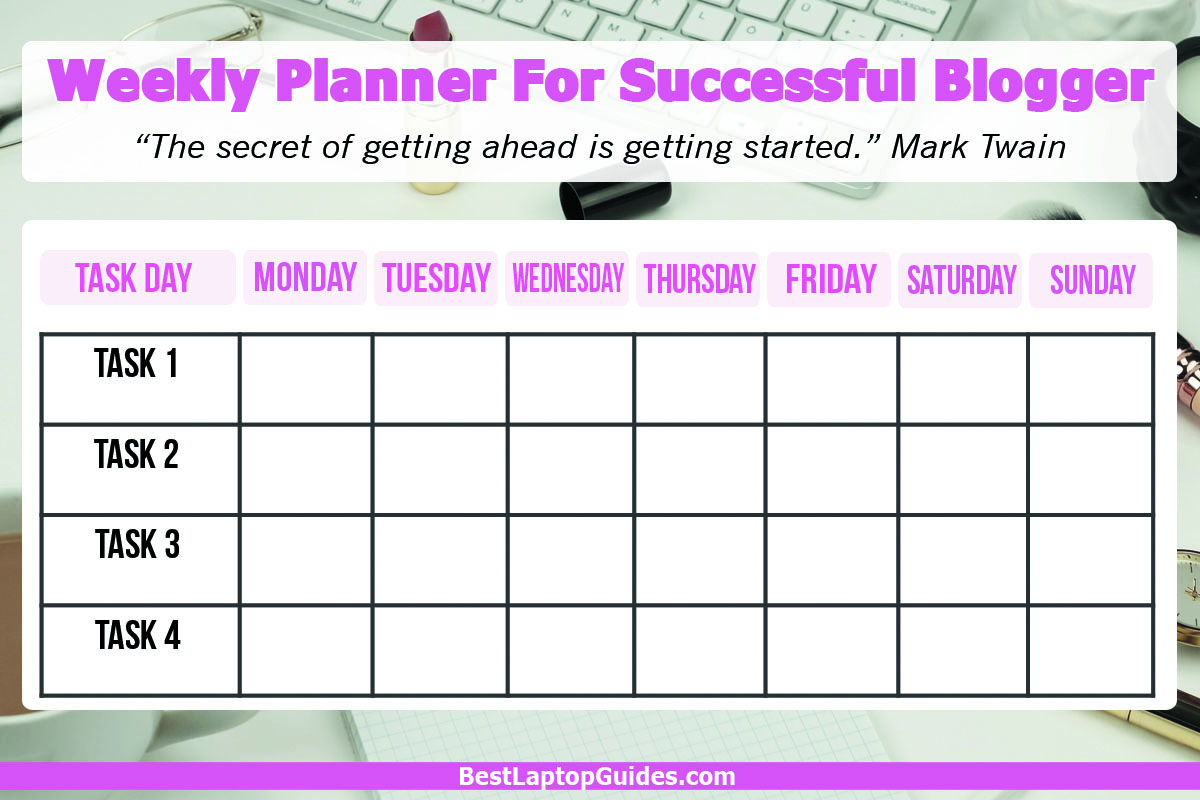
FREE Weekly Planner (Detailed)
From Monday To Wednesday
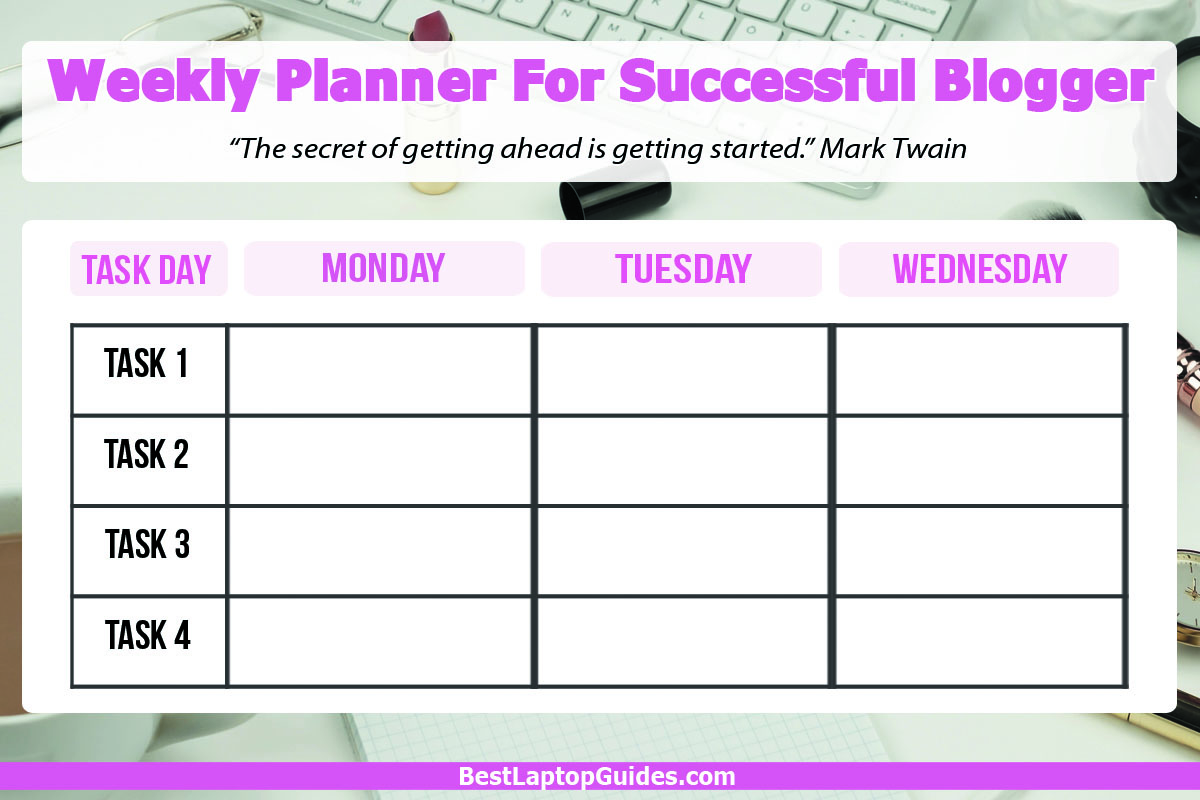
From Thursday To Friday
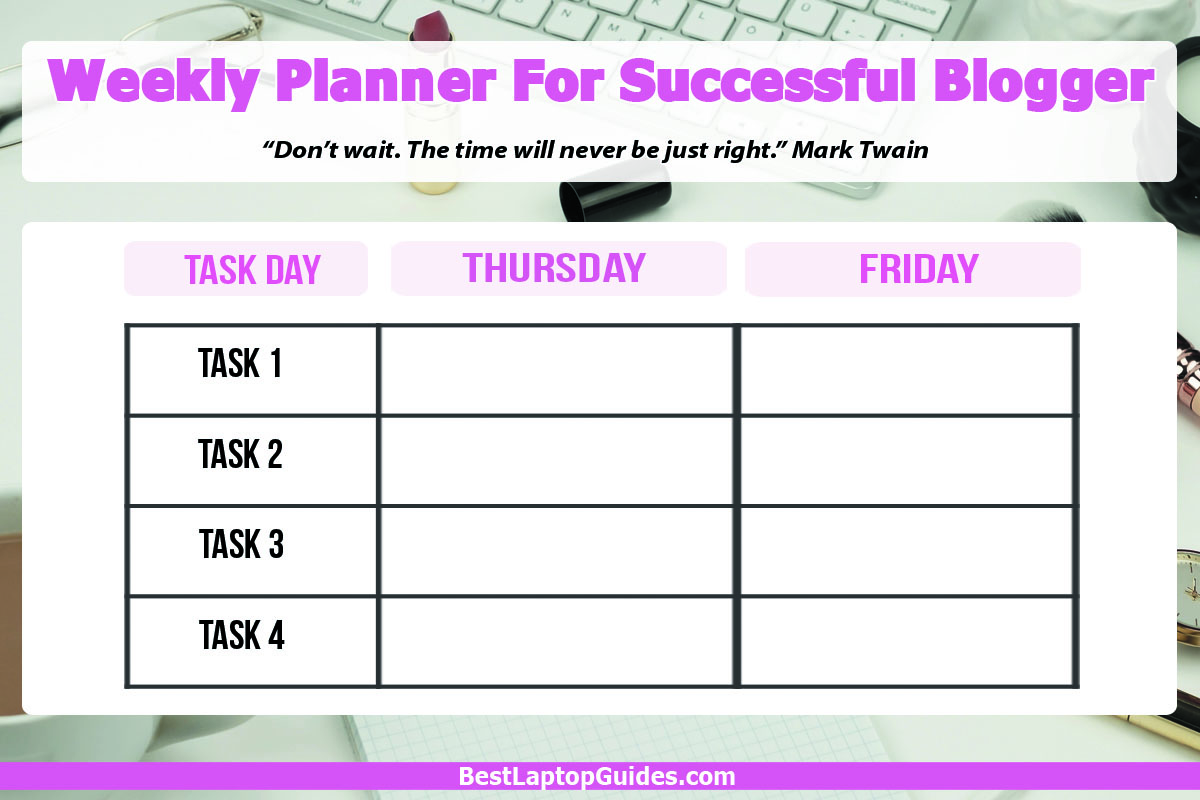
From Saturday To Sunday
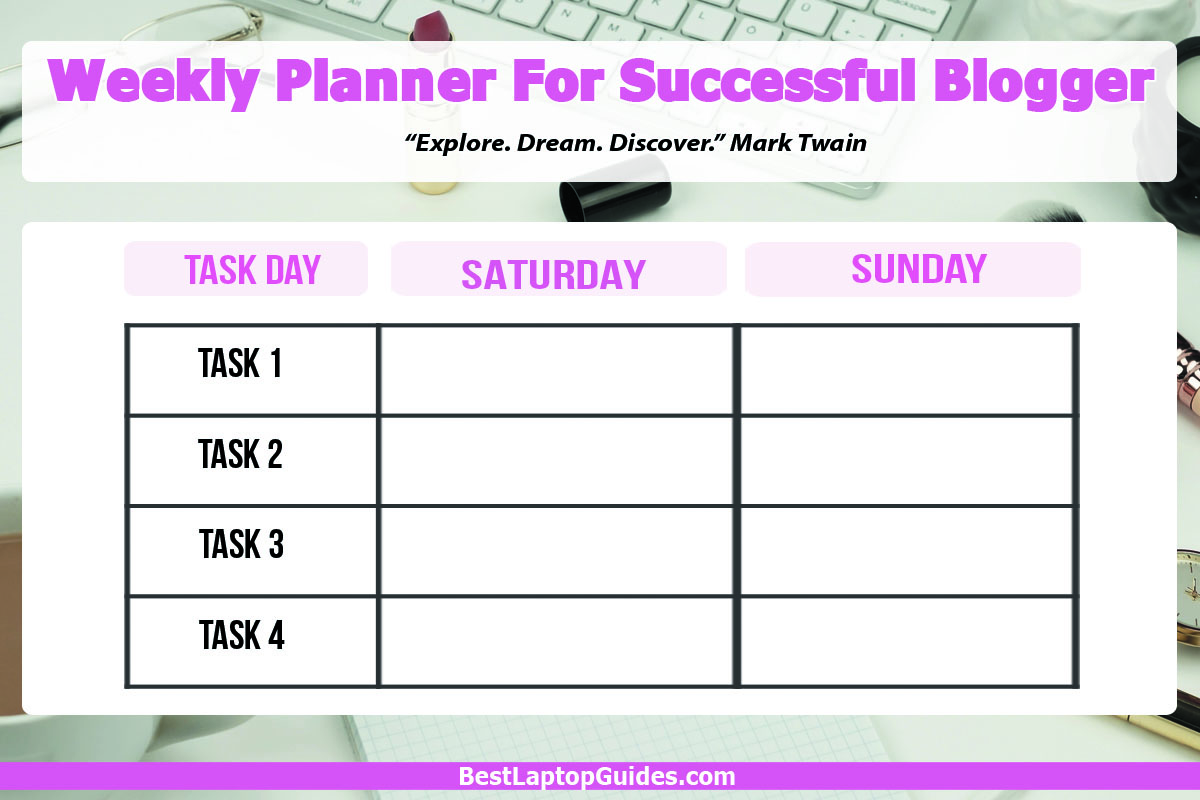
Finally, I hope these above tips will help you develop your blog faster, as well as keep track of and have success with your blogging.

